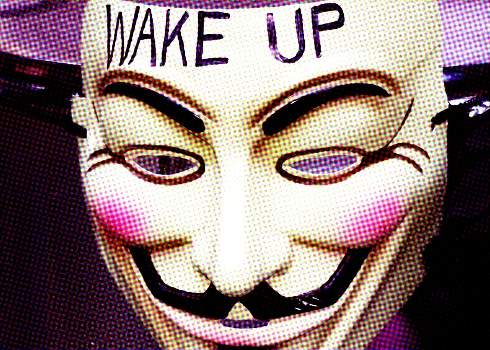As the global Occupy movement spreads (1,500 cities and counting), what are we witnessing? Are we on the verge of mass awakening, or are we fooled by illusions of grassroots power? Will we return to the status quo in a month or a year?
The experience of mindfulness tells us that a moment of openness can serve as a powerful interruption in stuck patterns, but much depends on what happens next. What follows is a reflection that weaves between the personal practice of mindfulness and the social practice now emerging through the Occupy movement.
1. Take a stand (of non-participation)
When we practice mindfulness, we are taking a stand: we commit to occupying ourselves, to fully inhabiting our body and mind. Thoughts and emotions still come and go, but we commit to not getting hooked by them, to not being controlled by the momentum of our minds.
The Occupy movement is saying that our social body and mind have become hooked and distracted by political ideology and media rhetoric. Some say that what this movement lacks is a focus.
Mindfulness practice teaches us that the impulse to identify with our thoughts is unrelenting. We see how we continually try to fortify ourselves by justifying the rightness and importance of our beliefs. It seems miraculous that large groups of people could even begin to practice a suspension of this impulse, beyond the usual partisan or self-justifying rhetoric. Perhaps, as Bernard E. Harcourt suggests, it would help to have new language for such a stance, so that we can name it, recognize it, and practice it with intention. How about “mindful democracy”?
2. Shine the spotlight of attention
Our personal mindfulness practice illuminates the smoke and mirrors of our minds. Usually we blur things together until they seem solid. We choose perceptions that reinforce our limiting views. We try to control whatever makes us uncomfortable.
The seemingly innocent act of “just noticing” without bias or judgment turns out to be a revolutionary act. Something unravels, and in the process one’s life becomes more dynamic, vivid, uncontrollable, and naked. We become more alive. And we become more accountable to ourselves.
The “just noticing” in the Occupy movement has been primarily focused on economic realities. More effective than outrage is the series of graphs now that document trends in U.S. employment, taxation, and wages. Focusing attention on such facts is, in itself, a game-changing act.
3. Include all voices
One of the remarkable things about the Occupy movement is its decision-making process. Everyone participates, all voices are valued and heard. It just takes a little process—ways of self-organizing and communicating quickly, a few guidelines that allow decisions to spread. Anyone who has been part of such a gathering experiences the contrast with our everyday reality. We are so used to self-oppression that we hardly notice when we do it to others, or when others do it us. We only notice it when, in a moment, the weight lifts.
4. Practice compassion
Mass movements create heightened energy. They easily “boil over” or “flare up” into destructive chaos. There are good reasons that peace-keepers fear them and why many of us are skeptical about their ultimate impact. And yet… the Occupy movement is a kind of awakening out of apathy, a release of energy and engagement. Is there a way to harness this energy and sustain it for positive change?
Mindfulness is the art of “letting be” without getting caught. The key is to resist the knee-jerk impulse to divide the world (including thoughts) into friend and foe, for and against. The antidote is compassion. When the “enemy” impulse starts to kick in, we reverse it. We get closer to what we tend to push away. We take another look. We see and feel the suffering there. We disarm our enemy and ourselves in the process.
5. Occupy space
Occupying space without judgment or agenda is welcoming to others. People are naturally attracted on a level that is below positions and statements. They intuitively feel that something important is going on and they want to be part of it. As more people join, that invitational space deepens and enriches, attracting people’s best intentions, their most grounded hearts. Confidence grows that from openness right action will be spontaneous, obvious, and appropriate.
6. Know thyself
If nothing else, mindfulness is humbling. Even when we see with sharp clarity the ways we undermine ourselves and short-change our potential, there is seemingly no end to the momentum of impulse and habit. Over time we see not only the moment-to-moment details of our mind and emotions, we also see the longer cycles and big patterns. With discipline, gradually we become wiser, more gentle, and more fierce.
After the shock of 9-11 came an eerie silence, then a spontaneous moment of collective grief and compassion. What happened next? We weren’t ready to occupy or defend that space. We didn’t have language or self-awareness about our collective patterns. We let ourselves be manipulated by fear and spin.
Now again, this is a moment. Do we have the collective discipline and self-awareness to occupy the space, so that together we can create what will happen next?
Mark Szpakowski is a software designer and long-time social innovator and activist. Suzan Szpakowski is executive director of the ALIA Institute, which brings mindfulness into leadership development and social change initiatives.






